An upcoming exhibit traces the design history of handspun and handwoven textiles, inviting introspection and celebrating their influence on our sense of ‘Indianness’
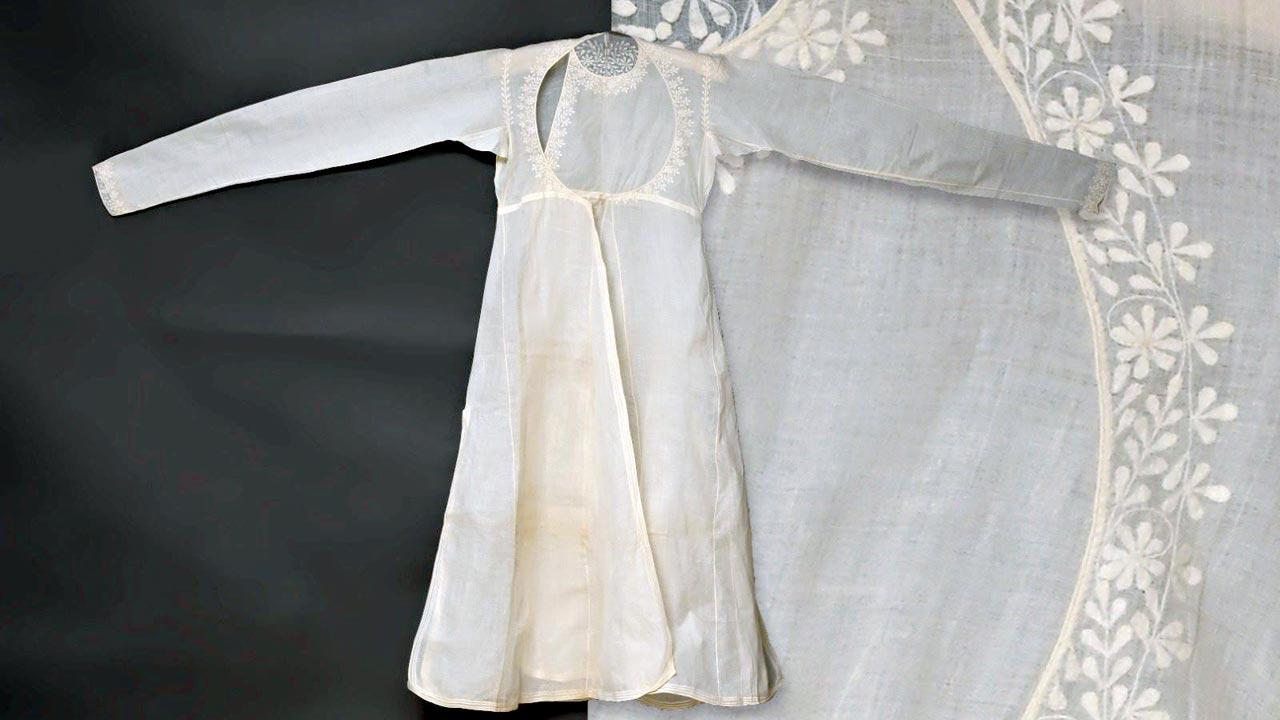
A 120-year-old Angarakha in handspun, handwoven muslin and applique work, sourced from an Awadhi family in Lucknow, from The Registry of Sarees archives
 Pehchaan, or identity, is not static. It is a living guide that evolves over time, shaped by creed, custom, country, class, culture, stirring a wild cocktail of personal history, politics and desires.
Pehchaan, or identity, is not static. It is a living guide that evolves over time, shaped by creed, custom, country, class, culture, stirring a wild cocktail of personal history, politics and desires.
ADVERTISEMENT
Yet, within the map of Indian design aesthetics, identity remains a sticking point. Much of India’s cultural identity stems from craft traditions that diverge from Western, predominantly modernist concepts emphasising individual genius in design.
Ahalya Matthan is the founder of Yali, an online retail platform that brings to life the work of The Registry of Sarees (TRS), a Bengaluru-based research and study centre with an interdisciplinary approach that enables design, curatorial and publishing of projects in the area of handspun and handwoven textiles. She claims, “It is interesting to acknowledge that there is no word for ‘design’ in the Indian vocabulary. Despite ongoing debates on distinguishing craft and design, both have contributed to utility and aesthetics in the space of art and culture.”
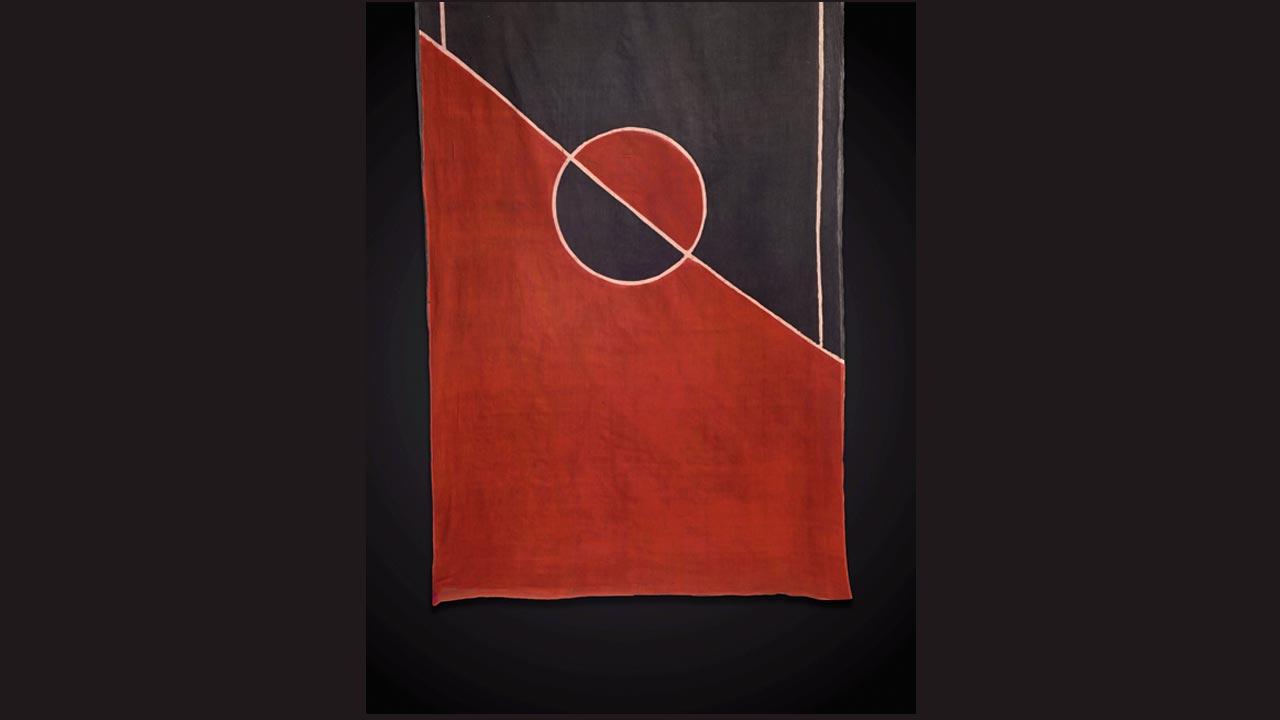 Sikalnayakanpet saree, handspun, handwoven cotton inspired by the Bauhaus shapes and functionality, hand painted at Sikalnayakanpet in Ponduru weaving cluster
Sikalnayakanpet saree, handspun, handwoven cotton inspired by the Bauhaus shapes and functionality, hand painted at Sikalnayakanpet in Ponduru weaving cluster
In Indian practice, the term, “kala” (craft) approximates the concept of design, and is rarely approached in isolation. Most designers collaborate with artists and craftspeople to produce cohesive outcomes that reflect the contributions of all parties. This dynamic shapes both our understanding of design and our exploration of identity.
Yali: Handspun, Handwoven – Past, Present, an upcoming exhibition in Mumbai from July 12 to August 4 at Khotachiwadi gallery 47-A, nudges at fundamental questions of identity—Who am I? What do I belong to?
Textiles serve as a conduit for this inquiry, prioritising practices over rhetoric to drive environmental and economic impact, educating and engaging communities with the stories behind their clothes, and promoting supply chain transparency. With a focused emphasis on process, materiality and skill, the exhibition aims to connect directly with our human experience.
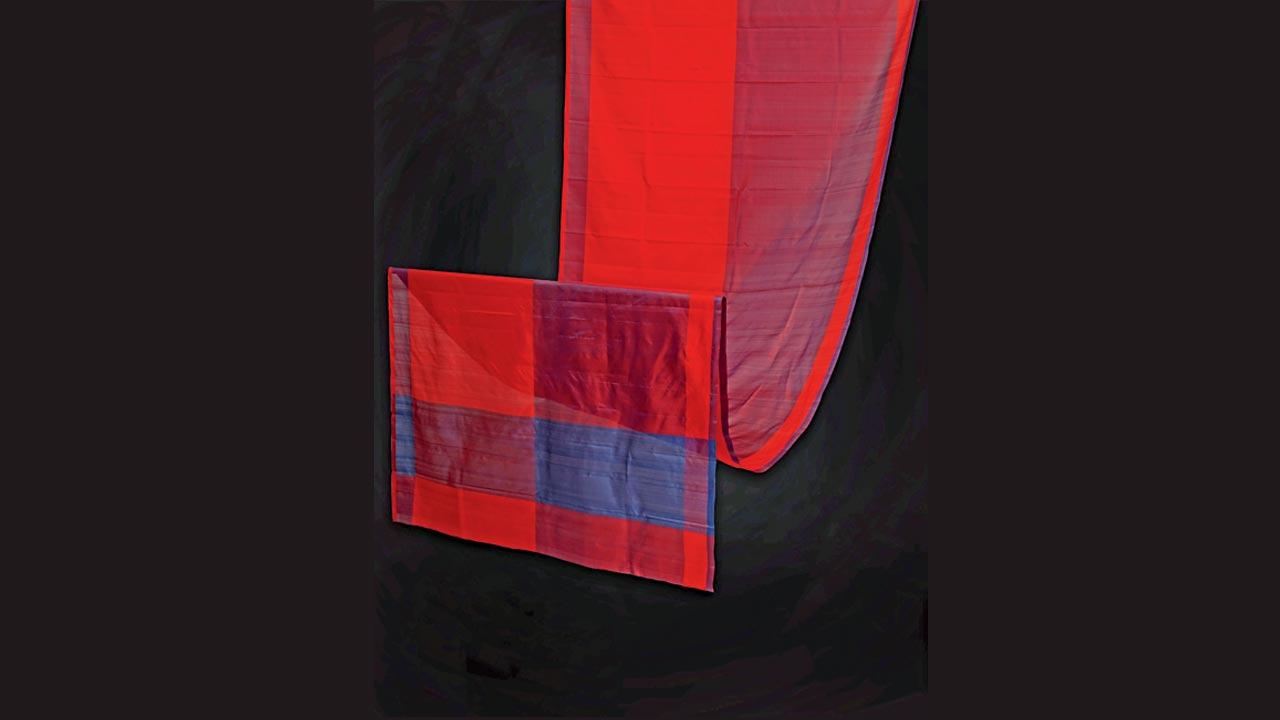 Half blue, half red wave saree in handwoven mulberry silk, inspired by Josef Albers’ Interaction of Colour theory, from Kodiyala weaving cluster
Half blue, half red wave saree in handwoven mulberry silk, inspired by Josef Albers’ Interaction of Colour theory, from Kodiyala weaving cluster
A collaborative effort led by Vishwesh Surve (principal and spatial curator), Aayushi Jain (curatorial research), Radha Parulekar (textile research and development) and Rahul Ravishankar (graphic design), the exhibition unfolds across six rooms, journeying through the history of handspun and handwoven Indian textiles. It situates them within two influential design movements: the Bauhaus and the Vishwakarma exhibitions. A significant portion of the exhibition spotlights India’s independence movement and the political connotations interwoven into Khadi, widely recognised as the brand of our “Fabric of Freedom”.
In the early 20th century, Mahatma Gandhi initiated the Swadeshi movement, boycotting foreign-made goods. Concurrently, Rabindranath Tagore championed integrating contemporary developments into identity-building for a new India, inspired by his experiences at Bauhaus in Germany, particularly in holistic design.
The gallery walkthrough begins with a timeline of key events, including the non-cooperation movement led by Gandhi from 1920 to 1922 and the Bauhaus delegation to Calcutta in 1922, invited by Tagore and American art historian Stella Kramrisch. It covers milestones such as the establishment of Ahmedabad’s Calico Museum of Textiles in 1949; the Vishwakarma exhibitions from the 1980s to 1990s, and the Khadi – The Fabric of Freedom show curated by Martand Singh in 2002-2003.
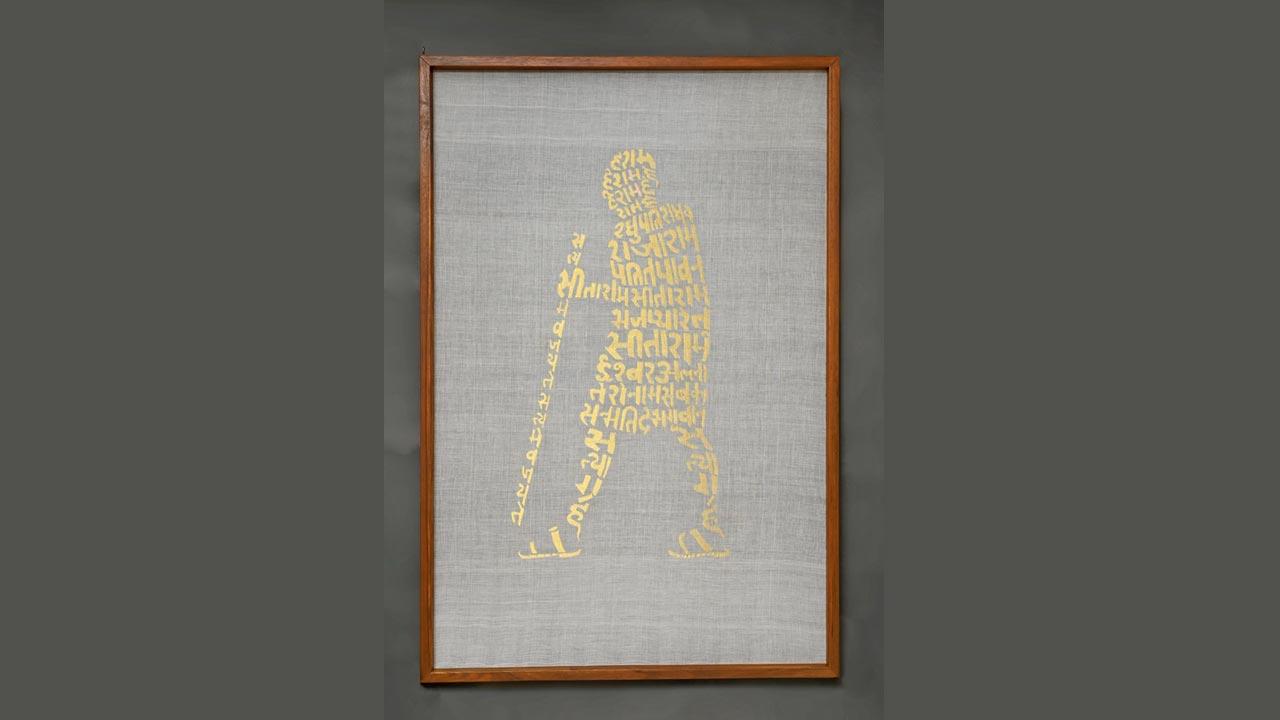 Mahatma Gandhi silhouette in handwoven cotton with gold Zari, Jamdani technique, originally designed by the Dastkari Haat Samiti for the Akshara project, from Venkatagiri weaving cluster
Mahatma Gandhi silhouette in handwoven cotton with gold Zari, Jamdani technique, originally designed by the Dastkari Haat Samiti for the Akshara project, from Venkatagiri weaving cluster
The exhibition proceeds to juxtapose contemporary and historic textile works to reveal layers of information about material, construction technique, texture, colour, pattern and dimension. Chapters on Zari, Influences of the Bauhaus and Vishwakarma on Vernacular Textiles, Intersection and Colours, Design History, and Indigenous Variety of Cotton Khudrang contribute to narratives on diverse communities, geography, culture, language, and sometimes religion. Handspun, handwoven materials speak a universal language that transcends cultures, offering deeper insights as visitors move through the rooms, culminating in what the exhibition calls a “personal story”. This section celebrates the contributions of ordinary families to India’s freedom struggle through textiles, remembered in living memory rather than history books.
On display are 86 pieces, including 56 sarees and various stitched garments, each asserting a unique identity. To wit: Tucked inside the world of Kora (in room 5) is Khudrang, meaning “self-colour” or “natural, as you are”.
Colour moves us, because history saturates it with associations and symbolism. Often discussed as if its impact were fixed and natural, the Kora room introduces India’s white (unbleached) fibre as a nuanced palette of colours. Natural fibres, hand-spun unevenly, reflect and refract light uniquely, shaping textures of cotton and silk from delicate to coarse, evoking emotions akin to jasmine buds, sea foam, wind-kissed clouds, and a tiger’s claw.
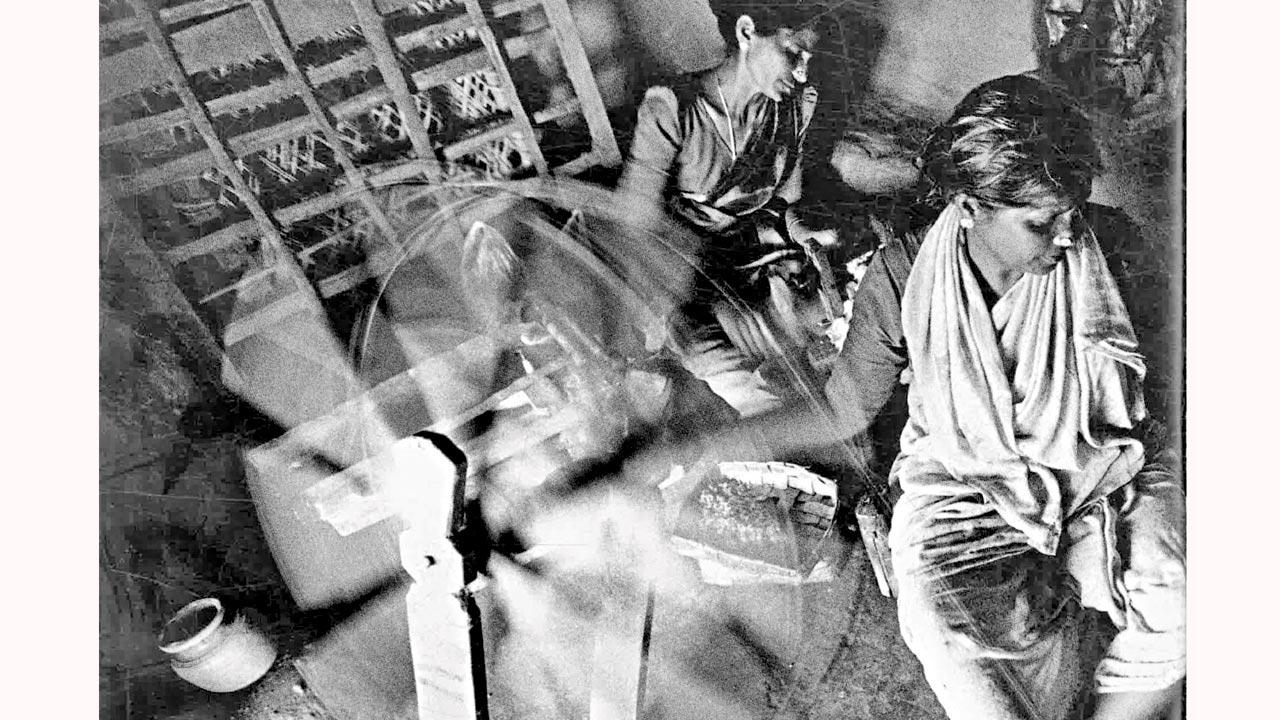 Room 4 of the exhibition showcases Manuel Bauer’s 2001 photographs for Khadi - The Fabric of Freedom, curated by Martand Singh. The black and white series captures stages of hand-preparing and spinning cotton in Baswaria, Bihar and Bontalakoduru, Mandavakuriti, and Ponduru in Srikakulam district of Andhra Pradesh. These traditional processes are still in use today, and Gandhi’s preference for Ponduru Khadi continues to influence contemporary politicians
Room 4 of the exhibition showcases Manuel Bauer’s 2001 photographs for Khadi - The Fabric of Freedom, curated by Martand Singh. The black and white series captures stages of hand-preparing and spinning cotton in Baswaria, Bihar and Bontalakoduru, Mandavakuriti, and Ponduru in Srikakulam district of Andhra Pradesh. These traditional processes are still in use today, and Gandhi’s preference for Ponduru Khadi continues to influence contemporary politicians
The design of Kora textiles, influenced by historical context, shows how past design choices impact the materials and processes used, guiding craftsmanship. For example, Gandhi’s silhouette woven with his favourite bhajans using mill-spun yarn and gold thread (adopted post the industrial revolution), showcases delicate cotton with intricate gold handling skills. The fabric’s translucency, achieved through the refined Jamdani technique by Venkatagiri weavers of Andhra Pradesh, imparts a gentle luminosity on the gallery wall.
Originally designed by the Dastkari Haat Samiti for the Akshara project, this Gandhi rendition continues to be woven within the Venkatagiri weavers cluster in Tirupati district, Andhra Pradesh. It stands as a testament to how artists, craftspeople, and designers, in pursuit of Indian identity, surrender their identities, as reflected in this piece.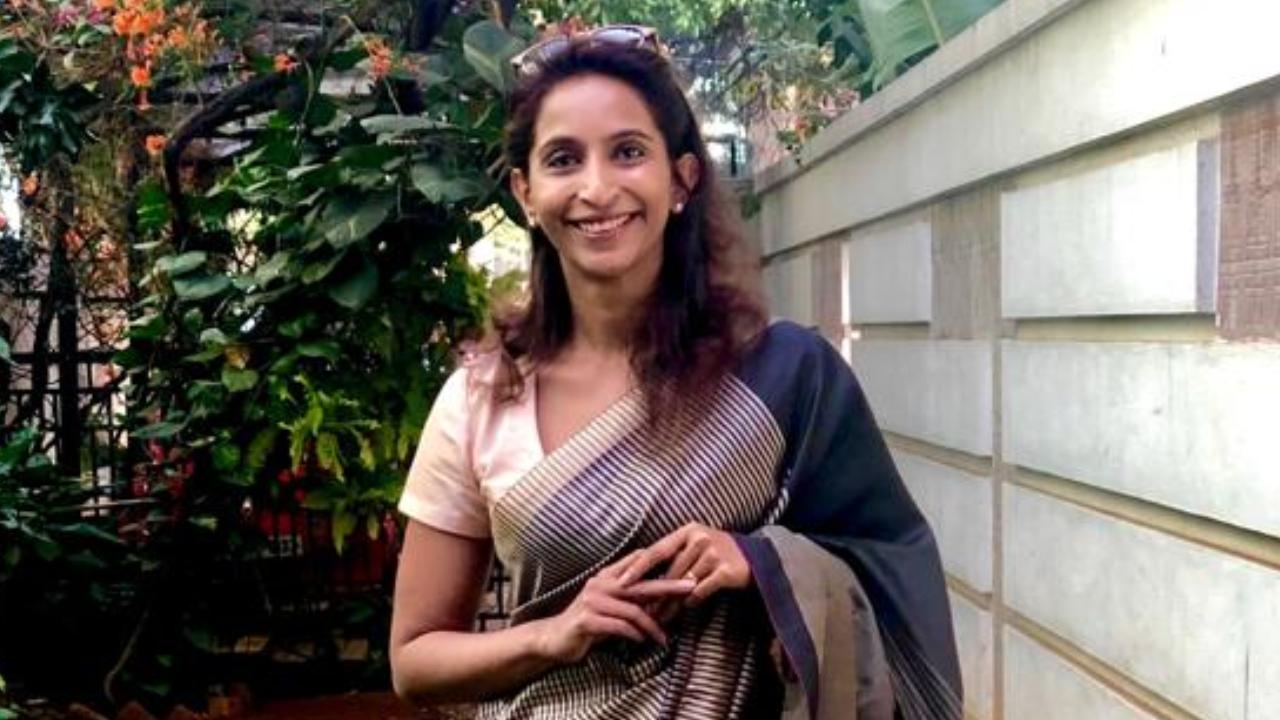 Ahalya Matthan, founder at Yali and The Registry of Sarees
Ahalya Matthan, founder at Yali and The Registry of Sarees
On display is a 120-year-old Angarakha in Bengal cotton from TRS. It originates from an Awadhi family of courtiers during the Nawab era, introducing the Mughal-influenced stitched silhouette, now a cornerstone of Indian sartorial heritage.
“Understanding our textile traditions through design journeys and vocabularies teaches us to keep their identities fluid yet intact and distinct.”
- Ahalya Matthan, Yali and The Registry of Sarees
Also featured is a Bandi jacket in Tussar, a wild silk indigenous to India. Previously known as the Nehru jacket and now, the Modi jacket, this style has become ingrained in our cultural and national identity. This reminds us of the role of textiles, shapes and silhouettes as cultural identifiers, with Tussar’s natural shades adding to material diversity.
As visitors wander through the rooms, they will ponder: Are we nearing an understanding of what it means to be Indian? Does the relationship between past ‘them’ and present ‘us’ pivot on identity, difference, or both? Will our identity be shaped by our choice of textiles, gender, sexuality, politics, and the gods we revere, or is it nebulous and instinctual?
 Subscribe today by clicking the link and stay updated with the latest news!" Click here!
Subscribe today by clicking the link and stay updated with the latest news!" Click here!







